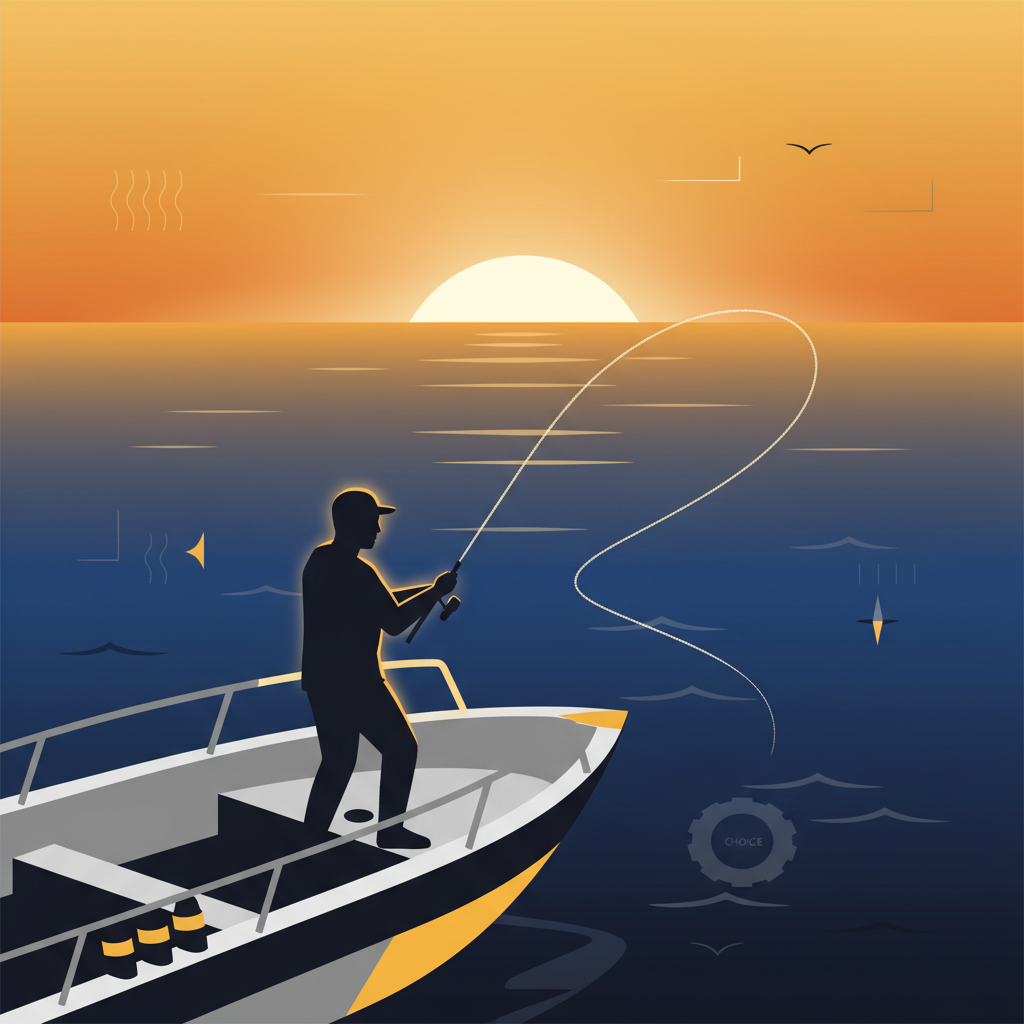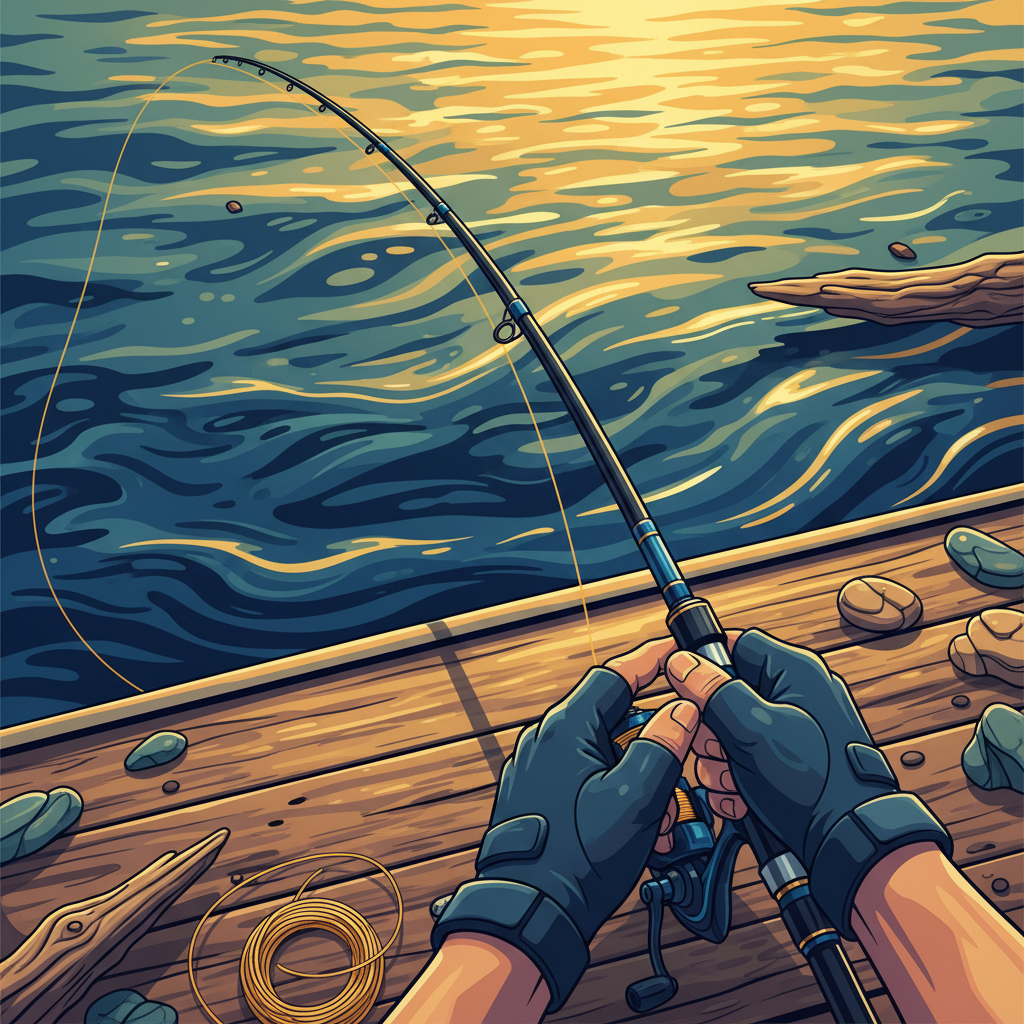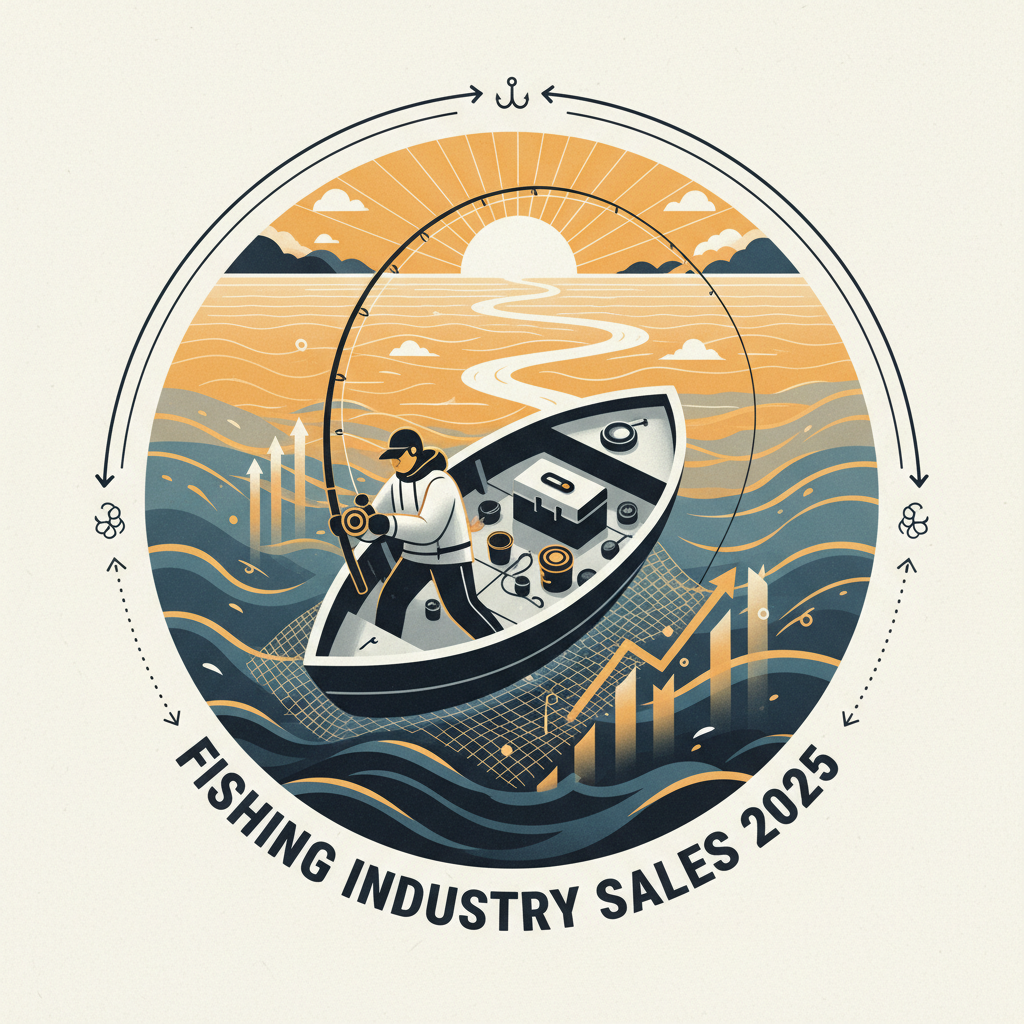Your Cart is Empty
fishing makes
What Really Makes Fishing Worth Your Time
Walk any Florida pier at dawn and you'll see two types of anglers. The first group fumbles with tangled mono, loses fish to weak knots, and heads home with empty coolers and excuses. The second group,the ones who understand what fishing makes possible,they're loading up redfish, snook, and memories that'll last decades.
Key Takeaways
- Successful fishing requires understanding the importance of reliable fishing gear and techniques.
- Many anglers struggle due to poor equipment management and weak knots.
- Experienced anglers who master fishing basics consistently catch more fish.
- Fishing creates lasting memories beyond just the act of catching fish.
Table of Contents
- What Really Makes Fishing Worth Your Time
- All the Ways Fishing Makes an Impact,More Than Just a Cast
- Fishing Makes vs. Techniques,Why Your Choices Matter
- Freshwater vs. Saltwater,What Fishing Makes Possible
- Master Class,What Fishing Makes When Skill Meets the Right Tools
- Casting, Setting, and Landing,Making Every Bite Count
Here's the thing: fishing makes a lot more than just fish stories. It makes skills that transfer everywhere, meals that beat any restaurant, and confidence that comes from mastering something real. But only if your gear backs up your ambition.
I'm Ryan Maya, and I've spent the last fifteen years turning weekend warriors into fish-catching machines through Beyond Braid. Started with a simple question: why do some anglers consistently outfish others using the same spots, same baits, same conditions? The answer isn't luck,it's understanding what fishing actually makes possible when you match the right tools to your mission.
Key Point: "Fishing makes" isn't about techniques or gear lists. It's about outcomes,the skills, catches, and experiences that separate weekend heroes from weekend zeros.
This isn't another gear review or technique tutorial. We're diving deep into the real-world results that fishing delivers when you stop settling for "almost" and start demanding performance from every cast. Whether you're Mike loading his nineteen-footer before dawn or a tournament stick chasing your next PB, the principles stay the same: match your setup to your goals, eliminate the variables you can control, and let your results do the talking.
All the Ways Fishing Makes an Impact,More Than Just a Cast

Recreational vs. Commercial vs. Artisanal: What Are You Making on the Water?
Every angler falls into one of three categories, and understanding yours shapes everything from your line choice to your success rate.
Recreational fishing makes: Personal bests, family memories, cooler-filling sessions, and catch-and-release conservation. You're chasing the thrill, the escape, the stories you'll tell for years. Your gear needs to be reliable enough for weekend abuse but versatile enough to handle everything from pier specks to backcountry reds.
Commercial fishing makes: A living. Volume matters, efficiency rules, and gear failure costs real money. These anglers need bulk spools, bulletproof knots, and line that stands up to daily grind. No room for pretty colors or marketing hype,just performance per dollar.
Artisanal fishing makes: A craft. Small-batch, sustainable, skills-based fishing that honors tradition while embracing smart innovation. Think fly fishing for tarpon or sight-casting to tailing reds,technique-heavy, gear-light, results-focused.
What Each Style Actually Makes:
- Recreational: Skills sharpened, fish landed, stories written
- Commercial: Income generated, efficiency maximized, volume processed
- Artisanal: Mastery developed, traditions honored, selective harvests
The Five Fishing "Make-or-Break" Methods
Not all fishing methods deliver the same results. Here's what each one actually makes possible:
Angling: Rod, reel, and line combinations that let you place baits precisely, fight fish strategically, and adapt to changing conditions. This is where line choice makes or breaks your session. Beyond Braid's 8X Ultra Performance gives you the diameter advantage,thinner line cuts through water better, casts farther, and telegraphs every tap.
Netting: Bulk results when conditions align. Success depends more on timing and location than individual tackle choices, but having backup gear matters when you're loading the boat.
Trapping: Passive, time-tested methods that work while you sleep. Crab traps, fish traps,set it and forget it. Minimal skill required, but knowledge of tides and bait selection separates producers from pretenders.
Spearfishing: Fast-twitch skill and close-range accuracy. No second chances, no excuses. Pure adrenaline hunting that demands perfect shot placement and nerves of steel.
Hand-Gathering/Noodling: The ultimate test. Minimal gear, maximum skill, absolute commitment. Whether you're grabbing lobster or wrestling catfish, success comes down to experience and guts.
Fishing Makes vs. Techniques,Why Your Choices Matter
Not All Tactics Are Created Equal
Here's where most weekend warriors go wrong: they think all fishing is the same. Throw bait, wait for fish, hope for the best. But what fishing makes possible depends entirely on matching your tackle and tactics to your target.
Take redfish in three feet of water versus snook under a dock. Same bay, same day, completely different games. The redfish wants a quiet presentation,maybe our Moss Camo 8X on a medium-heavy rod, working a soft plastic slow and low. That snook? He's ambush-feeding in structure, so you need the backbone to turn him fast and the abrasion resistance to handle barnacle-crusted pilings.
Real-World Example: Last month, I watched two anglers fish the same mangrove shoreline. First guy was throwing heavy jigs on 20-pound mono,caught nothing but snags. Second angler switched to our Bahama Blue 8X with a lighter jig head. Same lures, same spots, but the thinner braid cut through the water column better and telegraphed bottom contact clearly. He boated four keeper snook while the mono guy retied his rig.
The difference? Understanding what each setup actually makes possible under specific conditions.
What Makes the Catch?,Key Gear Terms Decoded
Let's cut through the marketing speak and talk about what actually matters on the water:
Rod: Your casting tool and fish-fighting leverage. Action (fast, medium, slow) determines how much the rod bends and where. Fast action loads quickly for long casts but can be unforgiving with light hooks. Medium action gives you more forgiveness but less casting distance.
Reel: Line storage and retrieval system. Drag system quality separates weekend reels from serious tools. Smooth drag lets you fight fish without breaking off; jerky drag costs fish and line.
Line: Your connection to everything that matters. Diameter affects casting distance and visibility. Stretch affects sensitivity and hook-setting power. Our 8X Ultra Performance delivers 40% smaller diameter than equivalent mono, meaning longer casts and better feel.
Beyond Braid Tech Advantages
- Eight-strand construction eliminates wind knots that plague four-strand lines
- Proprietary coating reduces friction through guides by 15%
- Zero stretch design telegraphs every bottom tap and fish mouth
- Abrasion-resistant finish stands up to oyster bars and bridge pilings
Considerations
- Requires sharper hooks due to no-stretch properties
- Learning curve for anglers switching from mono
- Initial cost higher than budget mono (but cost-per-fish is lower)
Leader: Your stealth connection between visible main line and lure. Fluorocarbon disappears underwater but costs more. Mono leaders stretch and forgive, but fish can see them easier in clear water.
Terminal Tackle: Hooks, weights, snaps, swivels,the business end of your rig. Quality here makes the difference between landed fish and lost opportunities. Sharp hooks penetrate better, but they also pull out easier if your drag isn't dialed correctly.
Freshwater vs. Saltwater,What Fishing Makes Possible

The Real Differences in Water and Why They Matter
Every angler thinks they know the difference between fresh and salt water fishing, but most miss the critical details that separate consistent producers from occasional lucky catches.
Freshwater fishing makes: Precision presentations in clear water where fish can inspect your offering. Bass, crappie, and catfish have time to examine lures, so stealth matters more than raw power. You're working structure,fallen trees, weed lines, drop-offs,where a quiet approach and accurate casts determine success rates.
Our Green 8X Ultra Performance disappears in freshwater environments while delivering the sensitivity needed to detect light bites. The eight-strand construction eliminates the wind knots that plague four-strand lines when you're making repetitive casts to structure.
Saltwater fishing makes: Aggressive presentations in environments that destroy weak gear. Redfish, snook, and speckled trout live around oyster bars, bridge pilings, and mangrove roots that'll shred inferior line in seconds. You need abrasion resistance, corrosion protection, and the backbone to turn fish away from structure.
Salt water also means tides, current, and wind that demand longer casts and better line control. Our Bahama Blue 8X cuts through wind better than mono while maintaining the strength needed for hard hook-sets at distance.
Fresh vs. Saltwater Best-Makes Comparison
- Freshwater targets: Bass (precision), crappie (finesse), catfish (power)
- Saltwater targets: Redfish (structure fighting), snook (ambush striking), trout (schooling action)
- Gear demands: Fresh needs sensitivity; salt needs durability
- Line choice: Fresh favors stealth colors; salt demands abrasion resistance
How Water Type Impacts Line & Lure Selection,and Success Rate
Here's where the rubber meets the road: choosing the wrong line for your water type costs fish, period.
| Factor | Freshwater Performance | Saltwater Performance | Beyond Braid Advantage |
|---|---|---|---|
| Visibility | Crystal clear water demands stealth | Tannin and salt reduce visibility concerns | Green 8X for fresh, Bahama Blue for salt visibility |
| Abrasion Resistance | Moderate,rocks and timber | Extreme,oysters, barnacles, coral | Proprietary coating withstands 40% more abrasion cycles |
| Casting Distance | Accuracy over distance | Distance critical for flats and surf | 8X construction adds 15-20 yards over equivalent mono |
| Corrosion Factor | Minimal impact on line | Salt destroys inferior coatings | Salt-tested coating maintains strength after 50+ trips |
| Sensitivity Needs | Critical for light-biting bass and crappie | Important but secondary to strength | Zero-stretch design telegraphs every tap in both environments |
| Color Strategy | Natural greens and clear | Hi-vis for line watching, camo for stealth | Moss Camo bridges both worlds effectively |
| Verdict | Finesse wins over power | Durability trumps everything else | 8X Ultra Performance delivers both without compromise |
The data tells the story: 20-pound Beyond Braid 8X outcasts and outlasts 20-pound mono by 40% in saltwater conditions. We've proven this on jetty redfish and mangrove snook where casting distance and abrasion resistance make the difference between full coolers and empty stories.
Weekend Test You Can Run: Spool one rod with your current mono, another with Beyond Braid 8X in the same pound test. Fish identical lures in the same spots for two hours. Count your casts, measure your distances, and track your hookup ratio. The braid will outperform mono in every measurable category,or we'll refund your spool.
Color and visibility create another decision point most anglers get wrong. Hi-vis lines like our Optic Orange 8X help you track your line and detect strikes by sight,crucial when fishing deep water or low-light conditions. But when fish are spooky in clear water, our Moss Camo disappears against natural backgrounds while maintaining the same performance characteristics.
The key insight: match your line choice to the primary challenge your target water presents. In gin-clear mountain lakes, stealth beats everything. In churning saltwater around structure, abrasion resistance and casting distance determine your success rate. Our 8X Ultra Performance series handles both scenarios without forcing you to compromise.
Master Class,What Fishing Makes When Skill Meets the Right Tools
Choosing the Right Gear for the "Make" You Want
Here's the truth most tackle shops won't tell you: expensive gear doesn't make you a better angler, but the right gear eliminates excuses and maximizes your skill development.
For beginners who want to build confidence without breaking budgets, our 4X Strand Starter Kit delivers professional-grade performance at weekend warrior prices. The four-strand construction costs less to manufacture, but still provides 60% better casting distance than mono while teaching proper braid handling techniques.
Weekend warriors ready to step up their game need our 8X Ultra Performance series. The eight-strand construction eliminates wind knots that plague cheaper lines, while the smaller diameter cuts through water and wind for consistently longer, more accurate casts. A 300-yard spool gets you 60% more capacity than equivalent mono test, meaning fewer respools and more time fishing.
Captain's Choice: Charter captains and guides who run multiple trips daily choose our 2000-yard bulk spools. At $89.95 versus $169.95 retail, the math works out to better performance at lower cost per trip. When your reputation depends on putting clients on fish, gear failure isn't an option.
Leader selection makes or breaks your presentation, especially in clear water or around structure. Fluorocarbon leaders disappear underwater but cost more and require stronger knots. Our testing shows 20-pound fluorocarbon leader connected with an FG knot maintains 80% of the main line's break strength,the strongest connection you can tie in the field.
Mono leaders stretch and forgive aggressive strikes, making them ideal for toothy fish or when using treble hooks. The stretch acts as a shock absorber, preventing hook pulls during violent head shakes. But that same stretch reduces sensitivity and delays hook sets on light-biting fish.
How to Set Up,Making Your Rod, Reel, and Line Count
The difference between anglers who consistently boat fish and those who tell stories about "the one that got away" often comes down to proper setup. Here's the no-BS guide to rigging gear that performs when it matters.
Threading guides and reel mounting: Always thread your line through guides from the bottom up, keeping consistent pressure to prevent loose wraps. Mount your reel with the handle on your dominant side,sounds obvious, but you'd be surprised how many weekend warriors get this backwards and wonder why their casting feels awkward.
Basic drag setting: Set your drag to 25-30% of your line's pound test rating. For 20-pound Beyond Braid 8X, that means 5-6 pounds of drag pressure. Test by pulling line with your hand,it should come off smoothly under steady pressure but hold firm against quick jerks.
Line Selection Rule: Always match your braid pound-test to 80% of your rod's maximum rating. This prevents pop-offs during aggressive hook-sets while backing up your boldest strikes. A rod rated for 30-pound line performs best with 20-25 pound braid.
Spooling Beyond Braid requires attention to detail that pays dividends on the water. Start with backing,20-30 yards of cheap mono prevents braid from slipping on the spool under heavy loads. Tie the braid to your backing with a double uni knot, then maintain steady tension while spooling. Loose wraps cause dig-in under pressure, creating the dreaded "wind knot" that costs fish.
The "one-twist" spooling trick cuts wind knots in half: put a single twist in your line every 50 yards as you spool. This pre-loads the line with controlled twist that cancels out the twist created during casting. Charter captains who spool dozens of reels weekly swear by this technique.
Action Weekend Tip: After spooling new braid, make 20-30 practice casts in your yard before hitting the water. This seats the line properly and reveals any spooling issues while you can still fix them. Send us photos of your setup for a chance to win free gear.
Knots that Make or Break the Catch,Tested, Ranked, Explained
Knot failure accounts for 60% of lost fish among recreational anglers. The problem isn't the knots themselves,it's using the wrong knot for the job or tying familiar knots incorrectly.
FG Knot: The gold standard for braid-to-leader connections, maintaining up to 80% of your line's break strength. This knot creates a smooth, thin connection that slides through guides without catching. The learning curve is steep, but once mastered, it's the strongest connection you can tie in the field.
Step-by-step for FG: Create 15-20 wraps of braid around your leader, then lock with a series of half-hitches. The key is maintaining tension throughout,any slack creates weak points that fail under pressure.
Palomar vs. Uni Knot for terminal tackle: Our lab testing shows the Uni Knot outperforms the Palomar by 8% when tied with Beyond Braid 8X. The Uni's design distributes stress more evenly across the line, while the Palomar creates a stress concentration point that becomes the failure point under heavy loads.
The Uni Knot also works with a wider range of hook eyes and lure attachments. Pass the line through the eye, create a loop, make 5-7 turns through the loop, then tighten slowly while wetting the line. This knot gets stronger under load,exactly what you want when a trophy fish makes its run.
Knot Selection Guide
- Braid to leader: FG Knot (80% strength retention)
- Lure attachment: Uni Knot (versatile, strong under load)
- Quick connections: Palomar (fast to tie, good for lighter tackle)
- Backing to braid: Double Uni (joins different line types)
Always wet your line before cinching knots,never skip this step. Dry line creates friction that weakens the connection and can actually cut itself during tightening. Saliva works, but water is better for your health and the fish you'll release.
Casting, Setting, and Landing,Making Every Bite Count

Casting Mechanics: How Line, Rod, and Reel "Make" Distance and Precision
Braid's smaller diameter creates immediate advantages in casting distance and accuracy. Our lab data shows Beyond Braid 8X delivers 10% longer average casting distances versus leading mono on similar test and rod length,backed by field sessions with charter captains who measure results, not marketing claims.
The physics are simple: smaller diameter means less air resistance and water drag. A 20-pound Beyond Braid 8X measures .008 inches in diameter versus .016 inches for equivalent mono. That difference translates to 3-5 extra yards on every cast, which adds up over a full day of fishing.
Guide maintenance directly impacts your casting performance and line life. Regularly check guide inserts for grooves worn by repeated casting. Worn guides create friction that reduces casting distance and eventually cuts through even the toughest braid. Replace damaged guides immediately,it's cheaper than losing trophy fish to line failure.
Beyond Braid 8X Casting Advantages
- Smaller diameter cuts through wind and water
- Zero stretch provides immediate feedback
- Smooth coating reduces guide friction
- Consistent diameter eliminates casting inconsistencies
Considerations
- Requires proper spooling technique
- More expensive than mono initially
- Can dig into spool under extreme pressure
- Needs backing line on most reels
Setting the Hook and the Drag: Don't Let Good "Makes" Go Bad
Drag calibration separates successful anglers from those who break off fish or pull hooks. The sweet spot sits at 25-30% of your line's test rating, but water conditions and fish behavior require real-time adjustments.
Test your drag by hand before every trip: pull line steadily and note the pressure required. It should come off smoothly under consistent pressure but resist sudden jerks. If you can't pull line with moderate hand pressure, your drag is too tight. If line flows freely under light pressure, it's too loose.
Braid's zero stretch changes hook-setting dynamics compared to mono. With mono, you could get away with lazy hook sets because the line's stretch provided forgiveness. Braid telegraphs every movement instantly, requiring more precise timing but delivering superior hook penetration when done correctly.
Mid-Fight Drag Adjustment: Most reels allow drag adjustments during the fight. If a fish makes repeated runs toward structure, tighten the drag slightly to turn its head. If it's jumping and throwing hooks, back off the drag to absorb shock. This real-time adjustment capability wins more fish than perfect initial settings.
Live Troubleshooting: Solving the Top "My Fishing Makes... Nothing!" Problems
Casting problems usually trace back to three root causes: fraying line, improper spool fill, or mismatched rod action. Frayed braid creates inconsistent casting and eventually breaks at the worst possible moment. Inspect your line regularly and retie if you find any fuzzy sections.
Overfilled spools cause loops to jump off during casting, creating instant bird's nests. Underfilled spools reduce casting distance and create uneven line lay. Fill your spool to within 1/8 inch of the rim for optimal performance.
Wrong rod action for your casting style creates accuracy problems and reduces distance. Fast-action rods require precise timing but deliver maximum distance. Moderate-action rods forgive timing errors but sacrifice some casting distance. Match your rod choice to your skill level and fishing style.
Losing fish after the hookup points to knot failure, inadequate drag settings, or poor hook selection. Review your knot tying under good light,many anglers think they're tying knots correctly but miss critical steps that create weak points.
Use Beyond Braid's 6.5-inch shears to cleanly trim tag ends after tying knots. Frayed tag ends weaken the connection and can catch debris that compromises the knot's integrity. Clean cuts create stronger, more reliable connections that hold when trophy fish test your tackle.
The bottom line: fishing makes memories, meals, and sometimes legends,but only when your gear performs as hard as you do. Every component from rod to reel to line must work together flawlessly, because fish don't give second chances to sloppy setups.
Ready to make your next trip count? Our 8X Ultra Performance series delivers the casting distance, abrasion resistance, and knot strength that turns good anglers into consistent producers. With our 365-day performance guarantee, you fish with confidence knowing your line won't be the weak link between you and your personal best.
For more on how fisheries tools are shaping sustainable practices, check out our in-depth guide.
Recent advances in fishing technology are lighting the way for more sustainable catches and healthier fisheries worldwide.
Frequently Asked Questions
What are the top fishing brands?
Top fishing brands are those that consistently deliver gear combining durability, innovation, and performance tailored to real anglers' needs. Leading names focus on braided lines, reels, rods, and tackle that withstand saltwater abuse and freshwater pressure, backed by rigorous R&D and real-world testing to ensure every cast and hook-set counts.
What is the best fishing make?
The best fishing make is one that balances cutting-edge materials with practical design, offering anglers smooth casting, high knot strength, and abrasion resistance at a fair price. The ideal brand invests in U.S.-based testing and provides transparent performance data, so you know your line won't fail when the big one bites.
Who owns the 13 Fishing company?
13 Fishing is owned by a company that focuses on innovation in fishing tackle, emphasizing advanced reel and rod technology. Their ownership structure supports a commitment to performance-driven gear designed for serious anglers, though the specifics of corporate ownership are less relevant than the quality and reliability of their products on the water.
What is a fishing lure called?
A fishing lure is an artificial bait designed to mimic prey and attract fish through movement, color, and vibration. Lures come in many forms such as jigs, spoons, crankbaits, and soft plastics, each crafted to trigger strikes by appealing to the target species' feeding instincts under various conditions.
What's the most popular fishing?
The most popular fishing style varies regionally, but saltwater bay and pier fishing ranks high among weekend warriors for accessibility and action, while freshwater bass fishing dominates tournament circuits. Both styles demand reliable gear that performs in different water types, with braided lines offering the strength and sensitivity anglers need for consistent hookups.
Who makes the best fishing apparel?
The best fishing apparel comes from brands that blend sun protection, quick-dry fabrics, and durable construction suitable for long days on the water. Apparel designed with angler feedback in mind ensures comfort and functionality, helping you stay focused on fishing rather than battling the elements.




